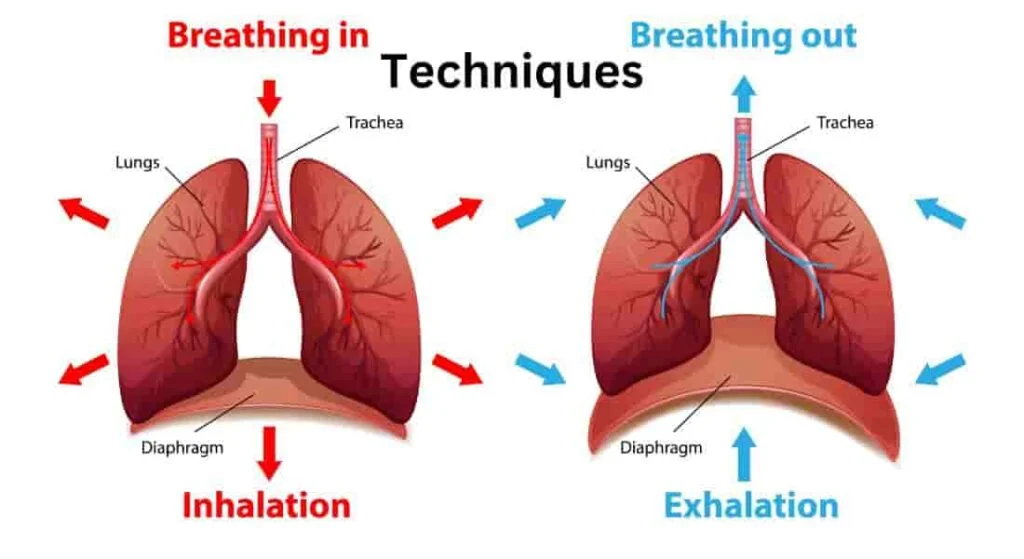
Are you dreading your next 200m sprint? Do your legs feel like lead after the first bend? Running fast doesn’t have to require so much effort.
With the right techniques and preparation, you can breeze through your next 200m race. The secret is efficiency – using your energy wisely so you’re not huffing and puffing before you reach the finish line.
Understand RPE Before You Run
Proper preparation will enable you to have plenty of energy for your run so that it does not tire you out.
What is RPE?
If you’ve ever found yourself feeling winded too quickly during your runs, you’re not alone. Many runners face this challenge, often because they push their pace beyond what their body can sustain.
To enhance your running experience and performance, consider incorporating the Rating of Perceived Effort (RPE) scale into your training routine.
RPE stands for rating of perceived effort, and it serves as a valuable tool for runners aiming to gauge and control their exertion levels during various types of runs.
The concept is simple: the scale ranges from 1 to 10, with 1 indicating minimal effort and 10 representing an all-out sprint that demands maximum exertion.
Before going to run, it’s beneficial to establish a target level of intensity. The RPE scale then becomes your subjective guide, allowing you to assess your perceived effort throughout the workout.
| Rating of Perceived Effort Scale | ||
| RPE Level | Sensation | Estimated Heart Rate Range |
| 2 | Light exertion; perfect for warming up or cooling down. | 50%-60% of your maximum heart rate |
| 3 | Gentle exertion; suitable for easing into or out of activities. | 50%-60% of your maximum heart rate |
| 4 | Moderate effort; deep breaths, yet comfortable. | 60%-70% of your maximum heart rate |
| 5 | Moderate effort; noticeable breathing, but still comfortable. | 60%-70% of your maximum heart rate |
| 6 | Moderate to vigorous effort; the run becomes challenging, with an uncertain duration. | 70%-80% of your maximum heart rate |
| 7 | Moderate to vigorous effort; the run poses a challenge, and doubts about sustainability arise. | 70%-80% of your maximum heart rate |
| 8 | Vigorous effort; short, gasping breaths indicate a strenuous level. | 80%-90% of your maximum heart rate |
| 9 | Vigorous effort to extremely hard; intensified gasping breaths, tempting thoughts of quitting. | 80%-90% of your maximum heart rate |
| 10 | Ultimate effort; pushing to the maximum limit. | 100% of your maximum heart rate |
It’s essential to recognize that various factors can influence your perception of effort on the RPE scale.
External conditions, mental state, and even environmental factors can impact how hard a run feels. While the RPE scale may not be perfectly accurate, it offers a practical and cost-effective method for self-assessment.
Warm-Up and Stretching

To run a fast yet effortless 200m, start with a proper warm-up. Do some light cardio like jogging in place to get your blood flowing. Then, stretch your major muscle groups:
- Hamstrings: Sit down on the ground and extend a leg. Flex the other knee and place your sole of foot on the inner thigh of the straightened leg. Take a long step out and reach for your extended foot. Hold for 30 sec. Reverse onto other side.
- Quads: Lay down facing one side and straighten your legs. Make bend with your top leg and pull your heel back towards your butt. Stay there for half minute and then switch to the other side.
- Calves: Stand at a distance of three feet from a wall with both legs well on the floor. Rest your weight against the wall with your right foot in front of you, ensuring that the heel remains on the ground. In addition, bend your left knee while maintaining a straight back. Thirty-second hold, then repeat on the other side.
A proper warm-up increases your core temperature and flexibility, allowing your muscles to work more efficiently. It also prevents injuries. Be sure to give yourself at least 10-15 minutes for an effective warm-up.
Once you’ve warmed up, do some light sprints to activate your fast-twitch muscle fibers. Start with 2-3 30m sprints at about 70% of your max speed. Build up to 95- 100% over 3-4 sprints. Finish with one last 30m sprint at max speed. Now you’re ready to run a personal best!
A proper warm-up and activating your fast- twitch muscle fibers with some light sprints will have you running fast and effortless.
Running Techniques

To run the 200m race without getting tired, focus on improving your running form and technique. The way you move can make a big difference in your endurance and speed.
Posture
Maintain an upright posture with your shoulders back, chest open, and head level. Engage your core muscles. If you hunch over, it constricts your diaphragm and makes it harder to breathe properly. Keep your body aligned and avoid tension in your shoulders and neck.
Arm Swing
To enhance your forward push, move your arms in sync with each step you take. Move your arms from your shoulders and not your elbows. Keep your elbows at about 90 degrees and have loose palms. Do not clench your fists. The arms also swing smoothly, this helping you keep the balance and rhythm.
Monitor Your Intensity While Running
Just like pros, do it if you want to run for a long period and not get tired. Make sure your form is good, breathe properly, and try not to push too hard.
You can use your RPE rating to track the intensity of your running or estimate the corresponding HR. Take an example, a RPE rating 2 to 4 is equivalent to half to sixty percent of the maximum heart rate.
MHR (Maximum Heart Rate) is the measure of your cardiovascular abilities in beats per minute and it is the peak level. The simplest way of calculating your MHR is to deduct your age from 220.
Initially, your heart rate should not surpass about 65 percent of maximum heart rate (MHR) and at most.
As long as this speed is sustainable, then you need to increase it slowly until you hit 85% of your maximum heart rate (MHR).
You can also rely on the reading displayed by the heart rate monitor if you happen to have one as the intensity level indicator during your run.
Related: Demystifying Maximum Heart Rate Secret
Build Your Endurance
Building endurance is like leveling up in a video game. Start with small steps, gradually add sprints, and fuel up with the right foods.
Your mind is a superhero too – visualize success when it gets tough. Take your training outdoors for added fun. Consistency is your builder’s tool.
Celebrate small wins, and turn your endurance journey into your own epic tale on the track!
Related: Unimagined Running Power Secrets for Improving Stamina
Stride
Take quick, light strides. Land softly on the middle of your foot rather than your heel. Push off strongly with your toes for propulsion. Keep your stride short and choppy rather than long. This makes it easier to accelerate and change direction. Practice “cycling” your legs rapidly to increase your leg turnover.
Relax
Stay loose and relaxed. Do not tense up your muscles. Tension restricts your range of motion and slows you down. Shake out your arms and legs before running to release any tension. Focus on deep, steady breathing to provide oxygen to your muscles.
Keep your jaw relaxed rather than clenching your teeth. Following efficient form and techniques in your 200m race will help make running feel almost effortless. With regular practice of these skills, you’ll be sprinting down the track in no time. Staying relaxed, keeping good posture, swinging your arms and taking quick, light strides are keys to running faster and stronger.
Breathing Techniques
To run 200m without getting tired, your breathing technique would not be underestimated. As you get into position at the starting line, take slow, deep breaths to calm your nerves. Once the race starts, establish a steady breathing rhythm to keep you going strong through the finish.
Find Your Pace
As you start running, breathe in through your nose and out through your mouth. Take two or three steps as you inhale, and two or three steps as you exhale. This helps you find a breathing rhythm to match your pace. If you start breathing too fast, slow down your pace slightly. You want to be able to breathe comfortably for the duration of the race.
Breathe From Your Diaphragm

Make sure you’re taking deep, diaphragmatic breaths that fill your lungs fully. Breathe in so your lower belly expands, not just your chest. This allows for greater oxygen intake with each breath. Shallow, chest breathing will not give you enough oxygen, and you’ll tire quickly.
Increase Your Stride
Once you’ve established your breathing and pace, start taking quicker, longer strides. Lengthen your stride to cover more ground with each step, while maintaining the same breathing technique.
This helps you accelerate smoothly without wasting energy. Keep your upper body relaxed as you increase your speed.
Related: Increase Your Stamina For 200m Run And Win The Race
Sprint to the Finish
For the final 50-60 meters, start your sprint. Take slightly quicker breaths to match your increased speed, but don’t start gasping for air. Keep taking deep diaphragmatic breaths and pump your arms to propel yourself forward. With practice, a strong finishing kick can make the difference between first and second place.
Crossing the finish line still able to breathe comfortably means you paced yourself well for an effortless 200m race. The key is finding a steady breathing rhythm, taking deep diaphragmatic breaths, and accelerating gradually. With the right technique, you’ll breeze through your next 200m!
Optimize Your Diet to Fuel Your Body

To optimize your diet for the 200m sprint, focus on foods that provide the right blend of carbs, protein, and healthy fats. Two or three hours before your race, have a light meal with:
- Complex carbohydrates like oatmeal, sweet potatoes or quinoa. Carbs are your body’s primary fuel source and will give you energy to burn.
- Lean protein such as chicken, fish, or Greek yogurt. Protein helps your muscles recover after tough workouts and sprints.
- Healthy fats are derived from nuts, seed, olive oil or even avocados. Fat gives you energy and also helps in absorbing nutrients.
Stay hydrated and drink plenty of water throughout the day to avoid dehydration. For extra electrolytes, you might also have a sports drink.
Avoid high-fat, high-protein, or high-fiber foods right before your race which can be hard for your body to digest and may cause nausea or cramps. Also skip the sugary snacks and energy drinks which give you an energy crash.
On race day, have a light snack like a banana or granola bar and sports drink about an hour before your event. The perfect pre-race meal will give you sustained energy and the hydration you need without weighing you down. Think light, high-carb, and easily digested.
In training, focus on a balanced diet with lots of nutritious whole foods. Key things to include each day are:
- 5-9 servings of fruits and vegetables which provide vitamins, minerals and antioxidants.
- 6-8 ounces of lean protein to build and repair muscle.
- 6-8 ounces of whole grains for fiber, B vitamins and sustained energy.
- 2-3 servings of dairy or dairy alternatives for calcium, vitamin D and protein.
- Includes healthy fats such as nuts, seeds, olive oil, and avocado. Restrict the intake of saturated fats from red meat and full-fat milk products.
Eating right will ensure you have the energy and stamina to sprint fastest. Combine good nutrition with plenty of rest and you’ll be unstoppable on race day!
Still Feeling Tired?

If you’re feeling tired during your 200m sprints, even after trying these tips, don’t stress about it. It happens to everyone, even the pros. Practice Makes Perfect.
Related: Monitor Your Exercise Intensity Using The Talk Test
Some days, you might feel tired no matter how slow you go. That’s totally normal! On days when you’re not at your best, take it easy.
Give yourself a break and rest up. Don’t worry too much about one tough workout. Instead, think about your whole training plan and stick to it. Changes in how you feel will happen bit by bit. If you stay committed to your plan, you’ll see improvements over time.
